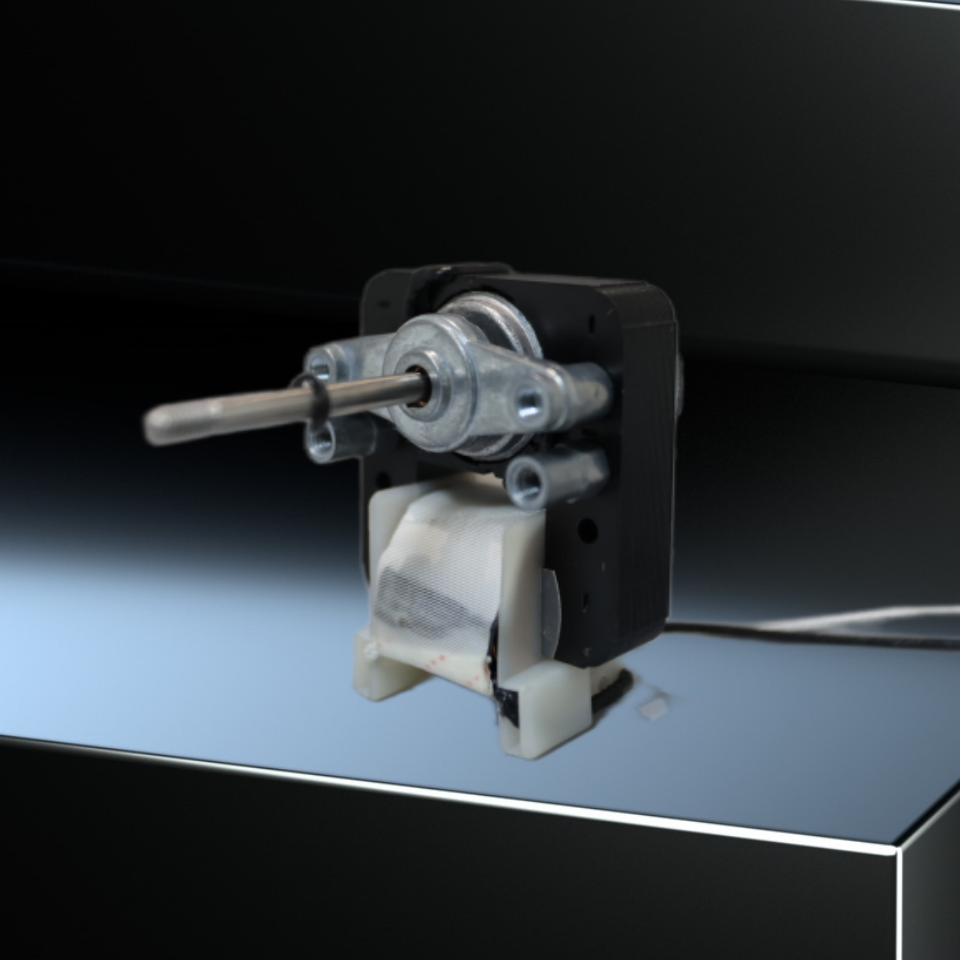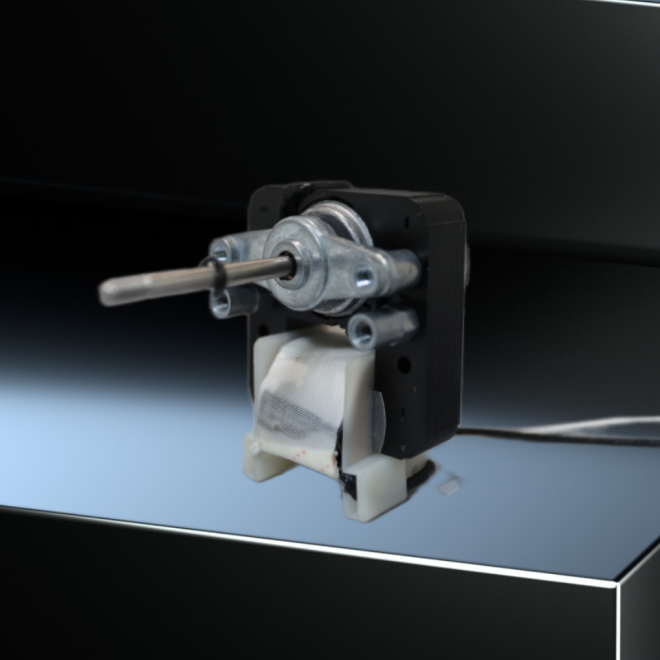Fan heaters are essential appliances in many households, providing warmth and comfort during colder months. However, like any electrical device, they can experience failures that disrupt their operation. Understanding the nuances of fan heater components, particularly the heater fan motor, is crucial for troubleshooting and repairing these devices. This guide will walk you through the necessary steps to repair common fan heater issues with straightforward solutions, referencing essential components such as the heater fan motor, which is central to the functionality of these appliances. We'll also touch on the expertise available from key players in the industry, such as Hanlang Technology, a prominent heater fan motor manufacturer.
Initial Power Supply Examination
● Verify Power Plug Connection
The foundation of any electrical troubleshooting begins with the power supply. Similar to inspecting basic clues at the onset of a mystery, ensure your fan heater's power plug is securely connected to the socket. A loose connection could potentially be the simplest reason why your heater is unresponsive.
● Inspect Power Cord for Damage
Next, perform a visual inspection of the power cord for any signs of wear or damage. A frayed power cord can not only cause your fan heater to malfunction but also pose a safety hazard. Should you discover any damage, replacing the cord promptly is essential to maintain both functionality and safety.
Thorough Motor Analysis
● Test Motor Resistance with Multimeter
The heater fan motor serves as the heart of the fan heater. Using a multimeter, you can test the motor's resistance to determine its condition. An abnormal resistance reading might indicate that the motor is burnt out, necessitating a replacement.
● Examine Motor Bearings for Wear
The performance of a fan heater heavily depends on the condition of the motor bearings. Worn or loose bearings may lead to inefficient operation or noise issues. Inspect the bearings and replace them if necessary to ensure smooth motor functionality.
Comprehensive Control System Review
● Check Control Panel Lights and Sensors
The control system operates as the brain of the fan heater. Begin by examining the control panel lights, which should illuminate if there are no issues. If they remain off, investigate further as this may indicate a problem with the power supply or the panel itself.
● Replace Faulty Control Components
If you identify that the control panel or sensors are malfunctioning, it is imperative to replace these components. Malfunctioning sensors can cause inaccurate feedback, disrupting the operation of the entire system.
Blade and Protective Net Assessment
● Inspect Blades for Deformation or Damage
Fan heater blades can become deformed or damaged over time. Carefully check each blade for any signs of imbalance or physical damage. Damaged blades should be replaced to avoid operational inefficiencies.
● Adjust Clearance Between Blades and Net
Ensure there is sufficient clearance between the blades and the protective net. Insufficient clearance can cause noise due to friction, hindering the fan heater's operation. Adjust the protective net as needed to maintain optimal spacing.
Common Power Supply Issues Resolved
● Address Plug and Power Cord Problems
Revisiting power supply issues, reaffirm the plug connection and inspect the power cord routinely. This step ensures that basic power concerns are resolved, which can eliminate unnecessary complexity during troubleshooting.
● Diagnose Unresponsive Fan Heater Scenarios
A fan heater that fails to respond may not always be suffering from a complex issue. Often, re-examining the power supply and basic components can highlight a simple fix, such as replacing a fuse or resetting a tripped breaker.
Temperature and Heating Problems Explained
● Investigate Heater Core Blockages or Damage
When a fan heater fails to provide adequate warmth, the heater core may be blocked or damaged. Cleaning or replacing the heater core can rectify these issues, restoring the heater to its full functionality.
● Examine Electrical Circuits for Faults
Faulty circuits can also impede the heating capability of a fan heater. Using a multimeter, check the circuits to ensure continuity and repair any breaks or shorts that may be discovered.
Noise and Vibration Troubleshooting
● Identify Blade Deformities and Bearing Issues
Excess noise or vibration during operation can often be traced back to blade deformities or motor bearing issues. Carefully inspect and replace any defective components to restore a quiet, efficient operation.
● Resolve Motor or Component Loosening
Ensure that all components are tightly secured. Loose parts within the fan heater can cause rattling noises and affect performance, thus tightening screws and bolts is a simple yet effective solution.
Control Panel and Sensor Malfunctions
● Fix Control Panel and Sensor Inconsistencies
Accurate feedback from sensors is crucial for the fan heater's performance. If control panel lights exhibit inconsistencies, consider replacing these components to improve system reliability and response.
● Ensure Accurate Airspeed Adjustments
A properly functioning control system will allow for precise airspeed adjustments. Verify that the control panel and related sensors are operational, ensuring a smooth and adjustable airflow.
Proper Maintenance of Protective Components
● Replace Damaged Protective Nets
Over time, the protective netting can become damaged. Opt for replacements that match the original specification and ensure they are securely installed to protect both the blades and users.
● Confirm Secure Installation of New Components
When replacing any component, ensure that it is installed correctly. This practice not only extends the lifespan of the appliance but also guarantees user safety and optimal performance.
Frequent Issues and Quick Fixes
● Discuss Overheating Motor Solutions
If you suspect your heater fan motor is overheating, consider potential causes such as overloading or poor ventilation. Address these issues by ensuring adequate airflow and reducing load where possible.
● Address Recurrent Fuse Blowing Problems
Frequent blowing fuses can indicate a short circuit or other electrical issues. Analyze the electrical system, replace incompatible fuses, and resolve any underlying electrical faults to prevent future occurrences.
● About Hanlang Technology
Ningbo Hanlang Intelligent Drive Technology Co., Ltd. is a leader in the micro-motor industry, located in Cixi, at the center of the Shanghai-Hangzhou-Ningbo economic triangle. Since 2011, Hanlang Technology has experienced impressive growth, emerging as a key player in motor drive development and manufacturing. The company operates three robust divisions, producing a substantial number of motors daily. With a commitment to innovation, Hanlang Technology holds multiple patents and collaborates with academic institutions to enhance product quality while actively participating in the development of industry standards.




